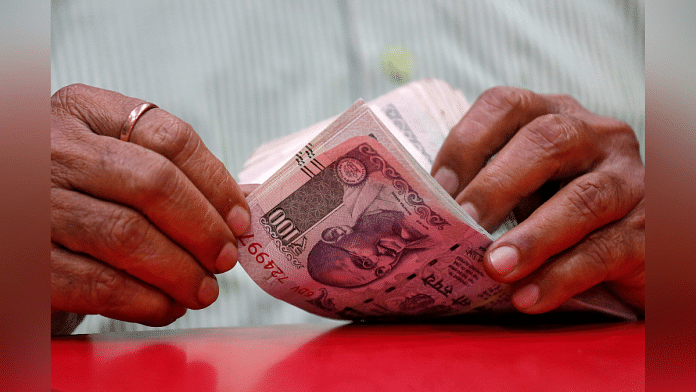Mumbai: The difference between the USD/INR onshore and the non-deliverable forward rates has narrowed on the back of the Indian rupee’s rally to its highest in seven weeks.
The 1-year USD/INR non-deliverable forward (NDF) rate is now about 40 paisa higher than the corresponding onshore rate.
This difference had climbed to more than 80 paisa last month when the rupee slipped to a record low of below 83 per U.S. dollar.
In near-dated maturities, the 1-month USD/INR NDF rate is now almost at par with the onshore rate, down from 8 paisa to 10 paisa when the rupee dropped below 83.
The difference between the onshore and NDF rates is known as basis points, which investors trade on by betting whether they will narrow or widen.
“There will be an unwind of trades that bet that the basis points will widen, considering how the dollar has faded off and the rupee has rallied,” a derivatives trader at a Singapore-based bank said.
The decline in “tail risk for the rupee” supports this convergence currently, the trader said.
“Till the time that the Reserve Bank of India does not allow banks to return to NDF, these spreads will be the barometer to gauge what is the offshore sentiment on the rupee,” said Anindya Banerjee, head research – fx and interest rates at Kotak Securities.
“The narrowing of the spreads suggests that short rupee portions offshore have been unwound.”
The RBI had told banks last month to not build additional positions in the NDF market.
The rupee has managed to recover to near 80.80 to the dollar from a record low of near 83.30 last month.
The rupee jumped more than 1% against the dollar on Friday after softer-than-expected U.S. inflation data made it highly likely that the U.S. Federal Reserve will shift towards smaller rate hikes from December.
The dollar index has dropped to near 108, almost 6% off year=to-date highs. -Reuters
(Reporting by Nimesh Vora; Editing by Savio D’Souza)
Disclaimer: This report is auto generated from the Reuters news service. ThePrint holds no responsibilty for its content.
Also read: Don’t blame Nirmala Sitharaman. India has a historical obsession with rupee value






